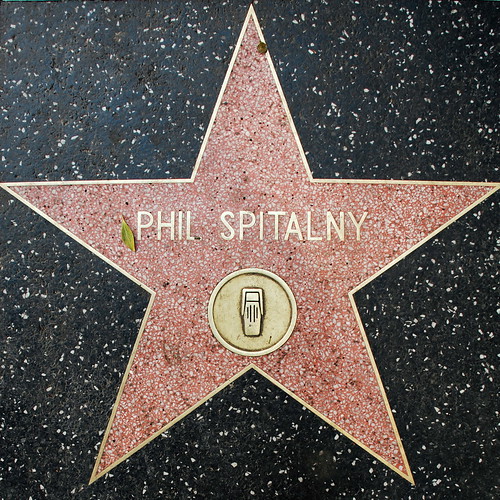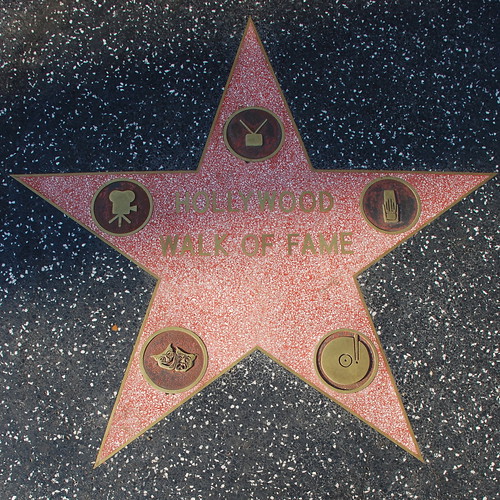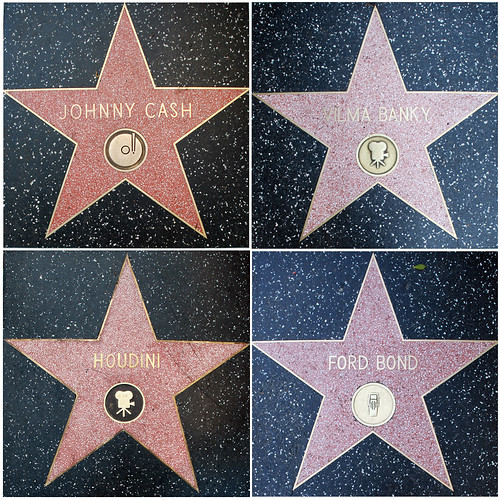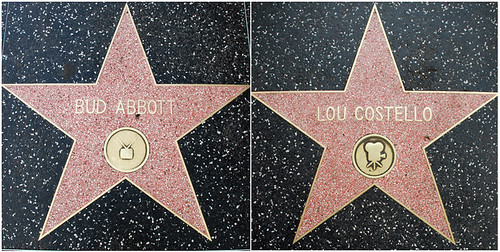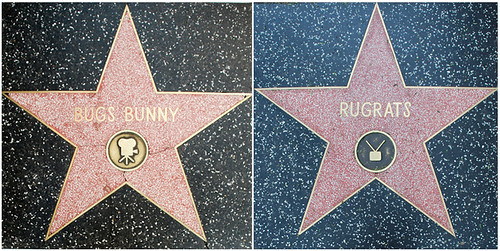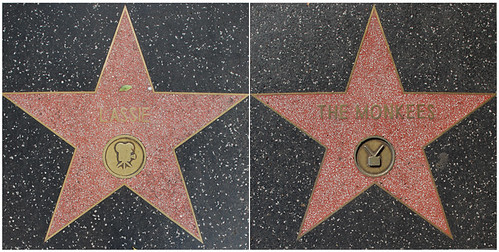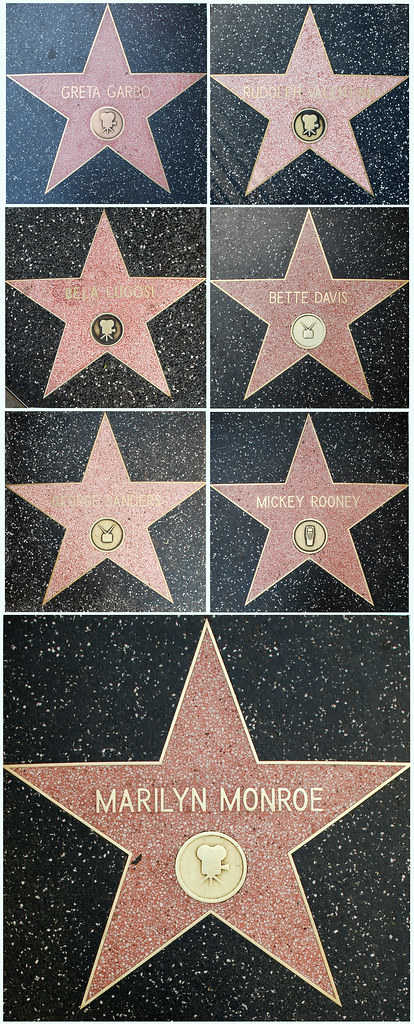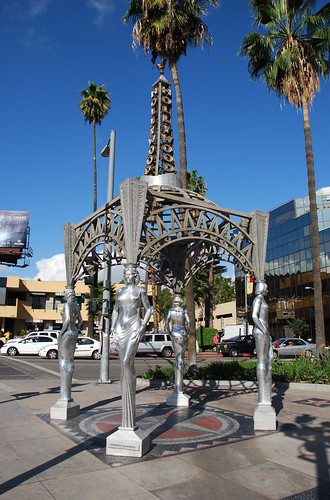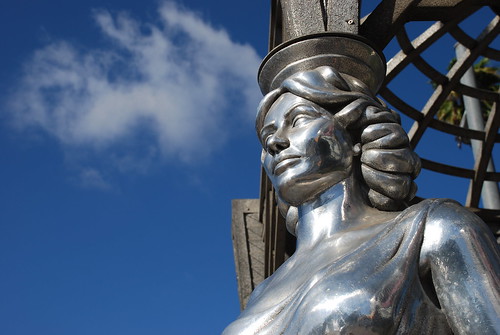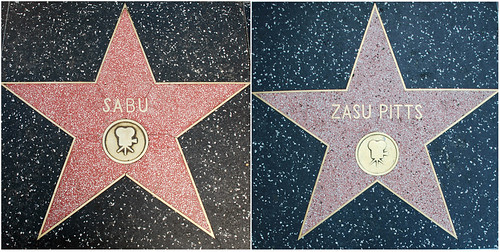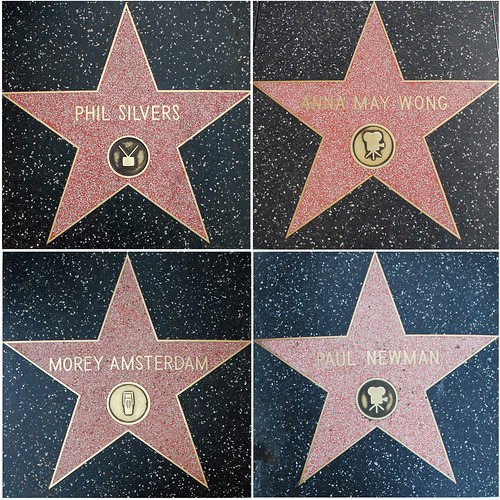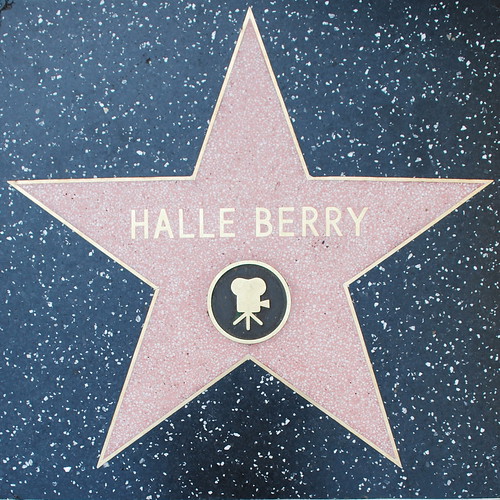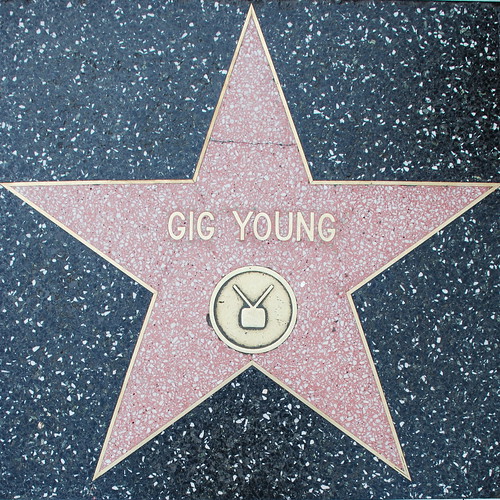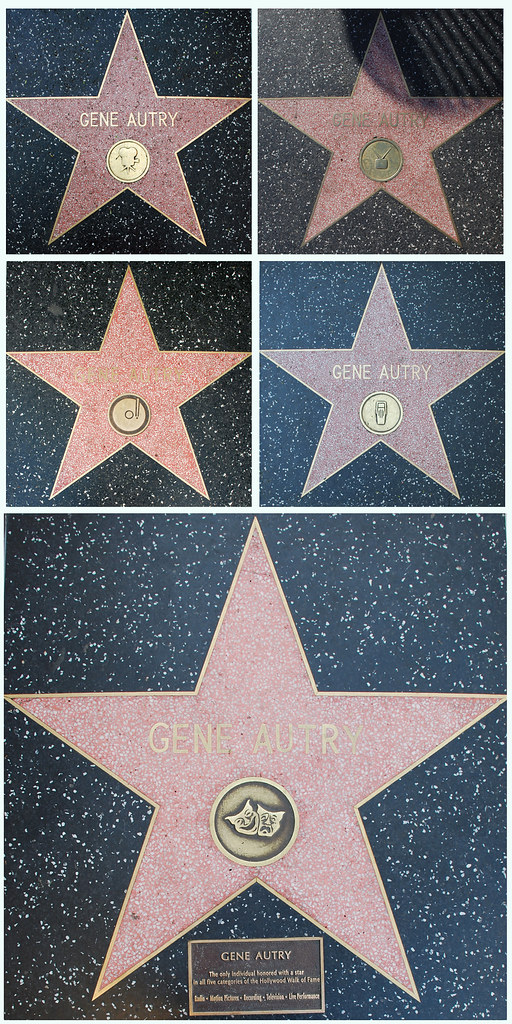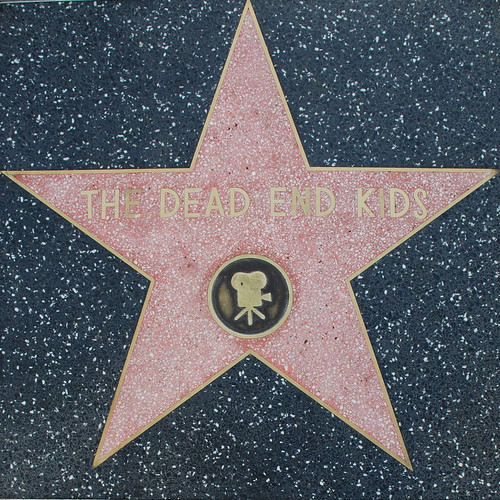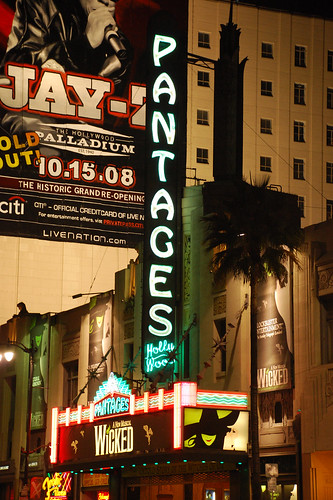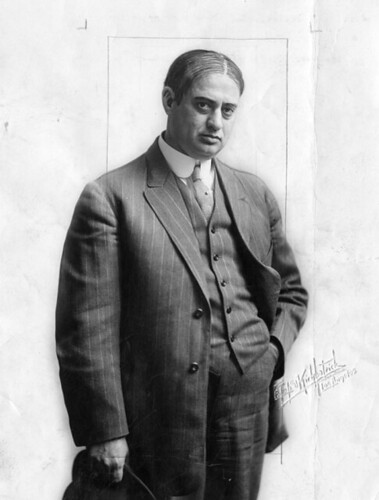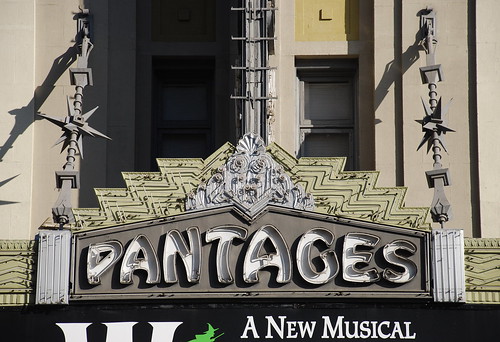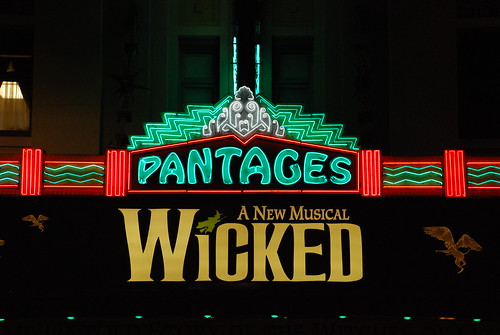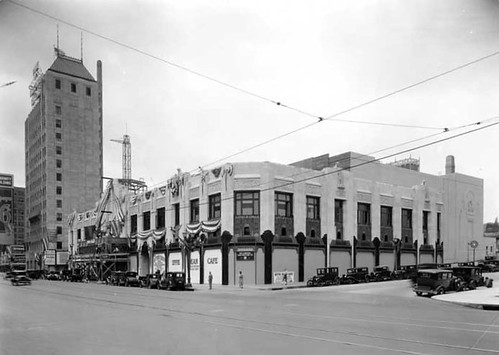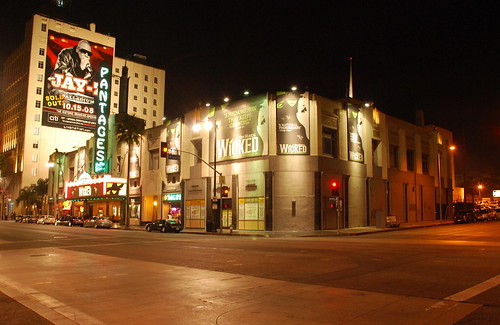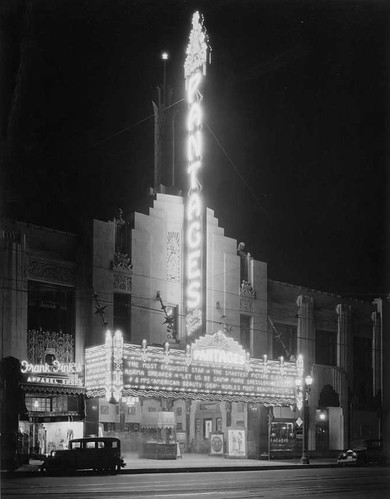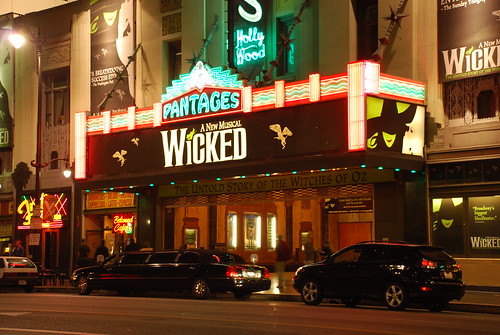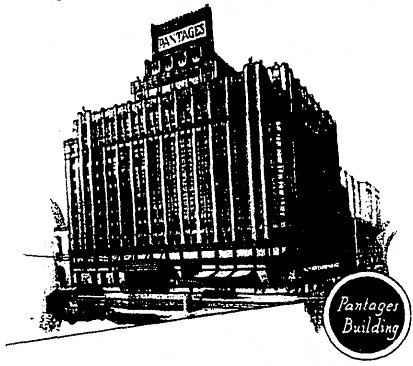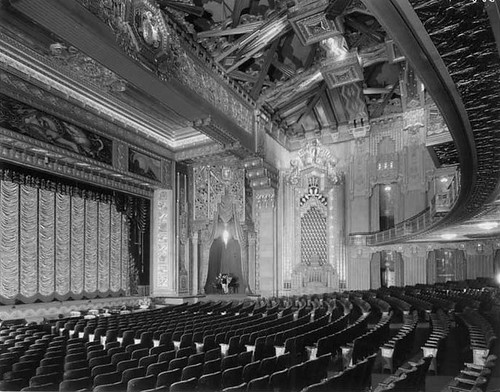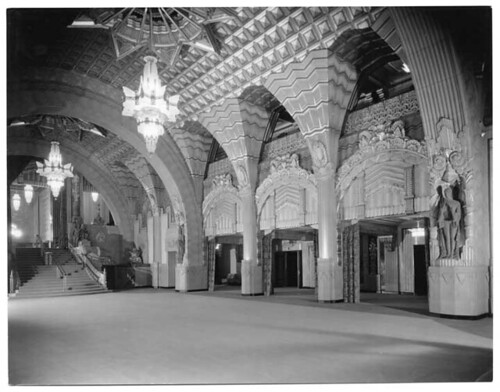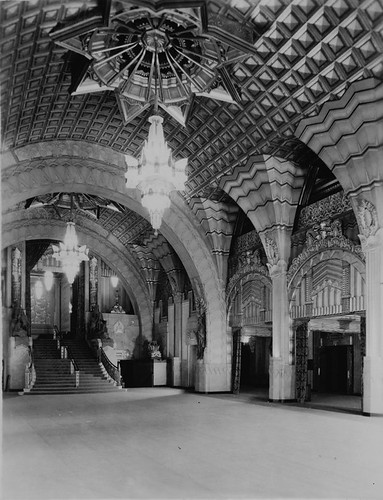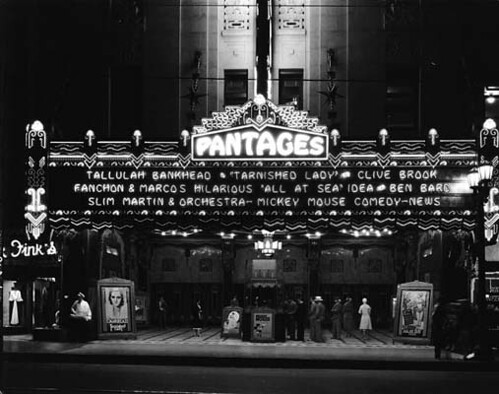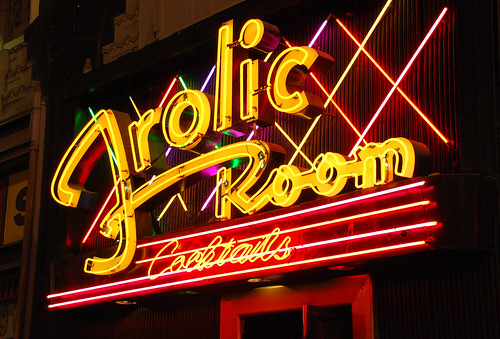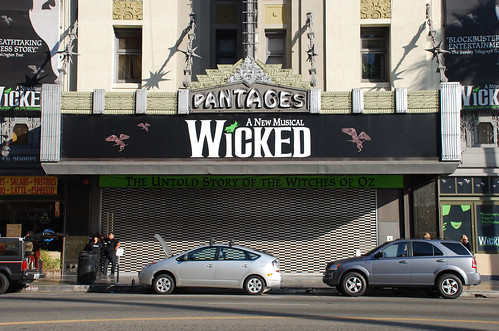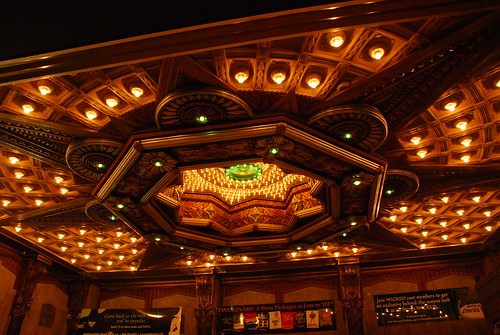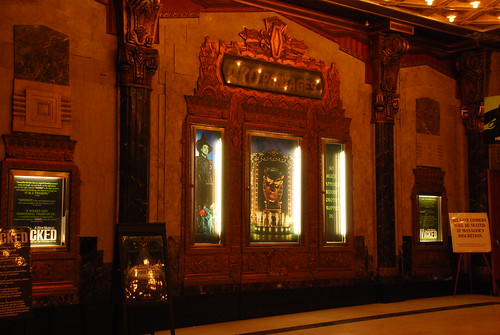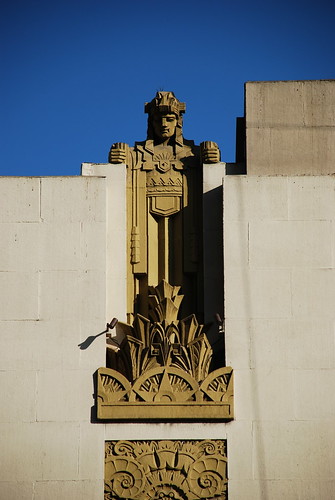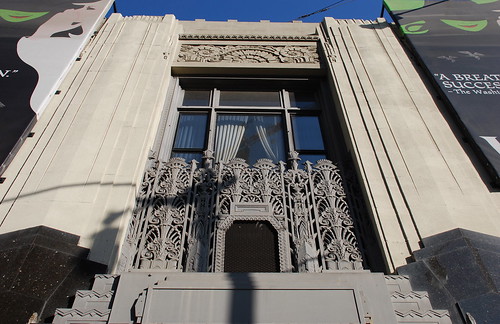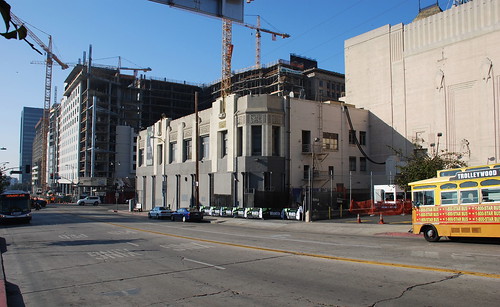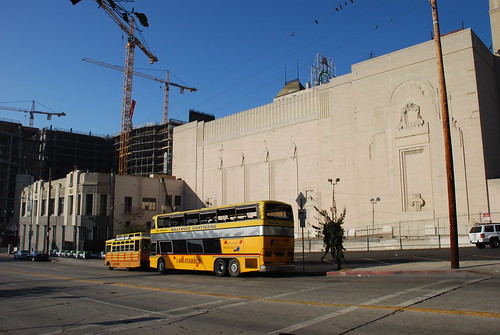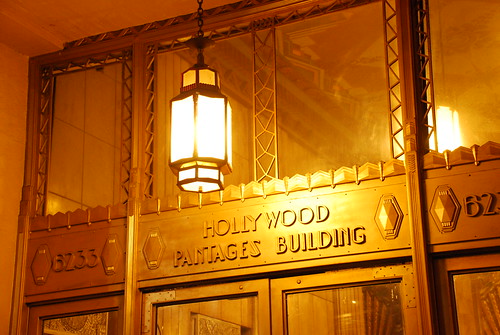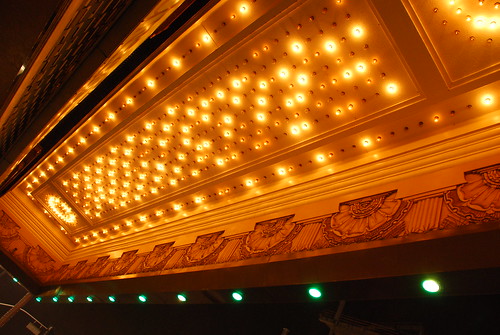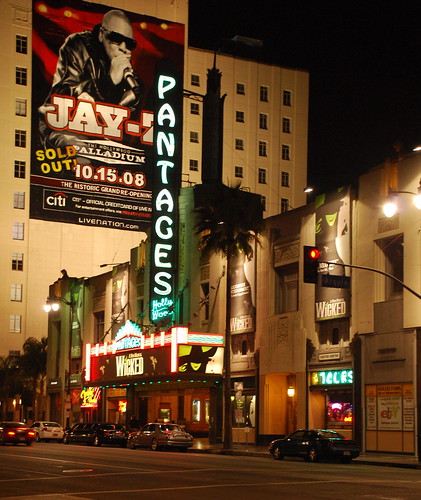Hollywood Walk of Fame
1960
Hollywood Boulevard between Gower Street and La Brea Avenue, Vine Street between Yucca Street and Sunset Boulevard – map
Declared: 7/5/78
So two things I’ve learned from researching for this post. First, it turns out we just missed the fiftieth anniversary of the Walk of Fame’s first (demonstration) star’s dedication. Secondly, for years I’ve been telling guests from out-of-town during the obligatory walks down Hollywood Boulevard that the Hollywood Chamber of Commerce hands out stars in four categories: radio; movies; TV; and recording. But, guess what? There’s actually a fifth category, and it’s for the rare-as-hen’s-teeth live theater/live performance star. I did not know that. Here’s a good trivia question: just one person has been awarded a star in each of the five categories. Who is it? The answer’s after the sports pages.
Notice throughout the Walk how some radio microphones point up, some down. That’s sure possible, but I wonder if there’s a rhyme or reason.
It was the Hollywood Improvement Association’s president, Harry M. Sugarman, who came up with the idea of the Walk of Fame back in 1953. More than a million dollars was raised for the project, in large part by assessing businesses $85 per foot fronting the proposed 15,000-foot Walk. 2,500 pink terrazzo stars would be laid out in 3' x 3' squares along Hollywood Boulevard, from Gower to Sycamore, and up and down Vine, from Yucca to Sunset.
Six demonstration stars were dedicated on August 15, 1958, at Hollywood and Highland, at the site of the old Hollywood Hotel. Actor Preston Foster drew honors in a lottery to get the first star.
The groundbreaking ceremony for the $1,151,000 project was held February 8, 1960, with Sugarman, Linda Darnell, Gigi Perreau, Francis X. Bushman, Charles Coburn, and others attending. Afterwards, the group went to the Knickerbocker Hotel for lunch. I don’t know what they ate.
The Walk’s official dedication was part of 1960’s Santa Claus Lane Parade on November 23.
Bud & Lou...
... cartoon characters...
... and even animals.
1,558 stars were dedicated in the sixteen months following groundbreaking. Apparently stars were awarded to not only anyone who had ever entertained, but also to anyone who had ever been entertained.
Hollywood’s Citizen of the Century and its Honorary Mayor.
Here’s something: Charlie Chaplin Jr, in October, 1960, lost a lawsuit against Hollywood’s Improvement Association and the Chamber of Commerce for not giving his dad a star on the Walk of Fame. (Charlie Sr eventually did receive a star, but not until the 1970s when Hollywood was less Commie crazy.)
Hollywood’s Celluloid Heroes, some that you recognize, some that you’ve hardly even heard of.
In 1994, as star-space was running out, the Walk was extended another block westward to La Brea Avenue. Also, at Hollywood and La Brea, you can find the Silver Four Ladies of Hollywood, a gateway gazebo featuring anything but the likenesses of Dorothy Dandridge, Dolores Del Rio, Mae West, and Anna May Wong, a veritable United Nations of Hollywood stars. It’s also where the Beatles’ and Elvis’s stars are located.
The gazebo, what’s supposed to Dorothy Dandridge, and the Beatles and Elvis.
Sabu, Zasu. Zasu, Sabu.
You want a star on the Walk of Fame? Each year the Hollywood Chamber of Commerce’s Walk of Fame Committee reviews nominations during an official nomination period. The criteria for a star are professional achievement, longevity of five years in the entertainment field, and contributions to the community. If you’re alive, you need to attend the ceremony, if you’re dead, you’re off the hook (though you need to be dead for at least five years to be considered). Oh, and it costs $25,000.
After the Walk of Fame Committee gives you the okay, the Board of Directors of the Hollywood Chamber of Commerce and the Los Angeles City Board of Public Works need to give their approvals. Finally, L.A.’s City Council bestows it thumbs-up. Then you’re in.
Dick Van Dyke got his star next to that to his idol, Stan Laurel.
The Chamber of Commerce dedicates about two stars per month on the two-and-a-half-mile Walk. Nineteen folks, including Howie Mandel, the late George Harrison, and the mostly-late Munchkins, got their stars in 2008. Twenty-five celebrities are scheduled to receive the recognition next year, including Cameron Diaz, Robert Downey, Jr, the Village People, and Tinkerbell.
This past summer, the MTA set up a Walk of Fame Restoration Committee after it was found the landmark needed $4.1 million in repairs. This followed the 2007 removal of 132 terrazzo squares (sixteen of which featured celebrities’ names) at Hollywood and Highland due to buckling and cracks. (The MTA claims the damage is the result of exposure to the sun. Others think the sidewalk sinking nine inches during subway construction in 1993 may have something to do with it.)
Clearly, I need to get to some of these dedication ceremonies.
One of Hollywood's shooting stars (Spade Cooley has a star, Robert Blake does not).
As part of the planned two-year renovation, the city’s Bureau of Engineering gave each of the 2,365 stars a grade from A to F. Ten stars got an F, fifty received Ds, and 718 earned a C. Those 778 stars, along with 2,155 blank terrazzo squares, will be replaced.
One of a few exceptions to the five categories.
Oh. The only person with a star in each of the five categories? The Singing Cowboy, Oklahoma’s Yodeling Cowboy, Public Cowboy #1, America’s Favorite Singing Cowboy – Gene Autry.
Finally, a Big Orange Landmarks congratulations to the person who suggested placing the Dead End Kids as the last and final star at the western edge of the Walk.
Sources:
“Group Lists Names for Hollywood Fame Walk” The Los Angeles Times; Aug 28, 1957, p. A6
“First Star Set in Hollywood Walk of Fame” The Los Angeles Times, Aug 16, 1958, p. B1
“Hollywood Gets Start on Its ‘Walk of Fame’” The Los Angeles Times; Feb 9, 1960, p. B1
“Chaplin Son Loses Suit on ‘Fame Walk’” The Los Angeles Times; Oct 14, 1960, p. 28
“Stars to Gather for Hollywood’s Walk Dedication” The Los Angeles Times; Nov 1, 1960, p. 21
Pool, Bob “Cost of Repairs for Hollywood’s Buckling Walk of Fame Trips Up Officials” The Los Angeles Times; Jul 17, 2008
Pool, Bob “Faded Stars to Shine Again on Hollywood Walk of Fame” The Los Angeles Times; Jul 22, 2008
Up next: Oviatt Building
continue reading...
